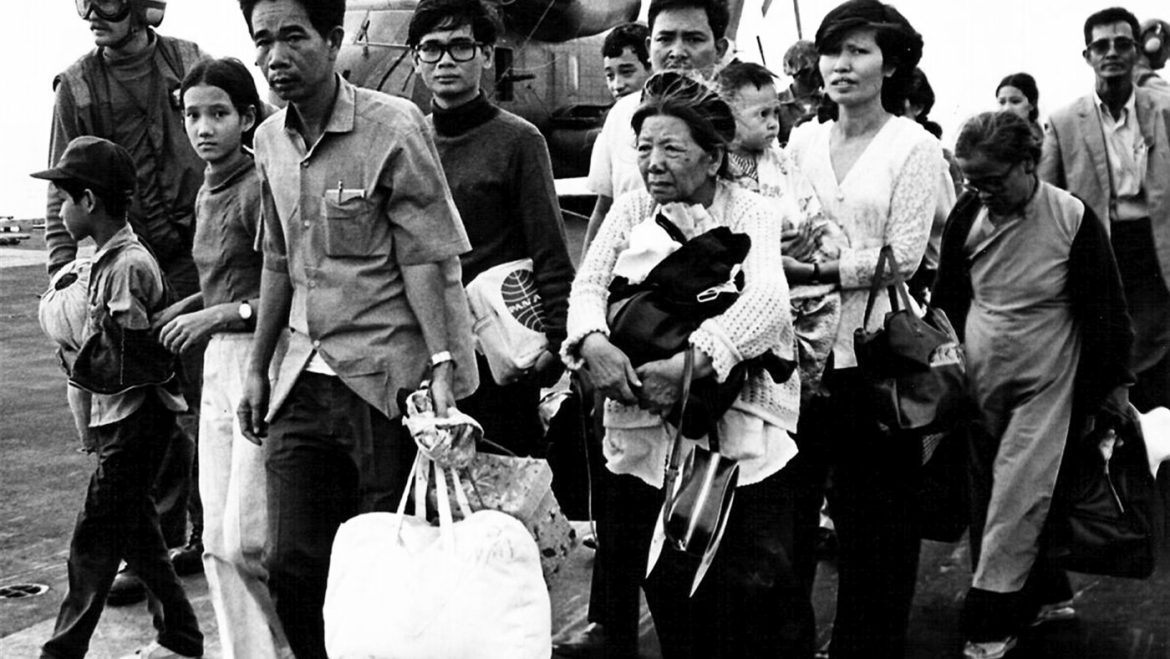The Fall of Saigon: A Pivotal Moment in History
The fall of Saigon on April 30, 1975, marked the end of the Vietnam War, a conflict that had ravaged the country for over two decades. This event, captured in numerous photographs, stands as a stark reminder of the chaos and desperation that accompanied the final days of the war. The images from this period are not just historical artifacts; they are powerful narratives that tell the story of a nation in turmoil and the human cost of war.
The Final Days of the Vietnam War
The Vietnam War, one of the longest and most contentious conflicts in U.S. history, reached its climax in the spring of 1975. The North Vietnamese Army, under the command of General Văn Tiến Dũng, launched a final offensive that culminated in the capture of Saigon, the capital of South Vietnam. This event signaled the end of the war and the reunification of Vietnam under communist rule.
The fall of Saigon was a chaotic and desperate time. As North Vietnamese forces advanced, thousands of South Vietnamese soldiers and civilians fled in panic. Images from this period show South Vietnamese soldiers stripping off their uniforms to blend in with civilians, desperate to avoid capture or worse. Panicked crowds scaled the walls of the U.S. Embassy, hoping to secure a place on the evacuation helicopters that were airlifting Americans and ‘at-risk’ Vietnamese out of the city.
Operation Frequent Wind: The Massive Evacuation
One of the most iconic images from the fall of Saigon is that of a helicopter perched precariously atop the U.S. Embassy. This helicopter was part of Operation Frequent Wind, the largest helicopter evacuation in history. Over the course of April 29 and 30, 1975, U.S. forces evacuated thousands of Americans and South Vietnamese from Saigon. The operation was a testament to the bravery and resourcefulness of American diplomats and military personnel who worked tirelessly to save as many lives as possible.
The evacuation was a massive undertaking, involving U.S. Navy, Marine Corps, Air Force, and Army helicopters. In total, over 7,000 people were airlifted from Tân Sơn Nhứt Air Base, the U.S. Embassy, and other locations. The images from this operation capture the desperation and chaos of the moment, as well as the heroism of those involved.
The Human Cost of War
The fall of Saigon was not just a military victory for the North Vietnamese; it was a human tragedy. The images from this period tell the story of the human cost of war. They show the fear and desperation of those who were left behind, as well as the bravery of those who risked their lives to save others.
One of the most striking images from the fall of Saigon is that of a group of South Vietnamese civilians scaling the wall of the U.S. Embassy. This image captures the desperation of the moment, as well as the human cost of the war. The civilians in the image are not just nameless faces; they are individuals with their own stories and struggles. Their faces are etched with fear and desperation, a stark reminder of the human cost of war.
The Aftermath: A New Era Begins
The fall of Saigon marked the end of the Vietnam War, but it also marked the beginning of a new era for Vietnam. The country was reunified under communist rule, and the city of Saigon was renamed Ho Chi Minh City. The aftermath of the war was a time of transition and uncertainty, as the country struggled to rebuild and heal from the wounds of war.
The images from the fall of Saigon serve as a powerful reminder of the human cost of war. They tell the story of a nation in turmoil and the desperate struggle for survival. But they also tell the story of hope and resilience, as the people of Vietnam worked to rebuild their country and move forward.
Conclusion: A Legacy of Remembrance
The fall of Saigon is a pivotal moment in history, one that is captured in the powerful images from the final days of the Vietnam War. These images serve as a legacy of remembrance, a testament to the human cost of war and the resilience of the human spirit. They tell the story of a nation in turmoil and the desperate struggle for survival, but they also tell the story of hope and the power of the human spirit to endure and overcome.
As we look back on the fall of Saigon, we are reminded of the importance of remembering the past and learning from it. The images from this period serve as a powerful reminder of the human cost of war and the need for peace and understanding. They tell the story of a nation in turmoil, but they also tell the story of hope and the power of the human spirit to endure and overcome. The legacy of the fall of Saigon is one of remembrance and hope, a testament to the resilience of the human spirit and the power of the human heart.


